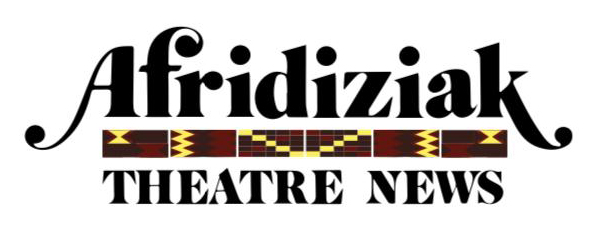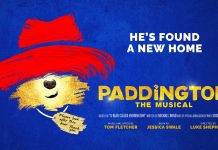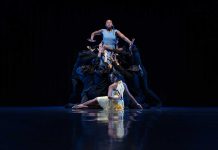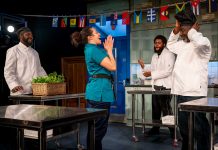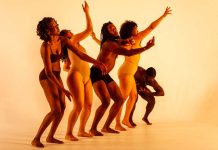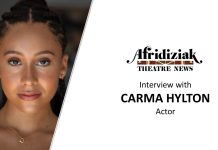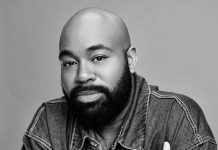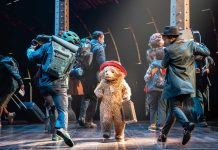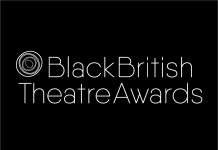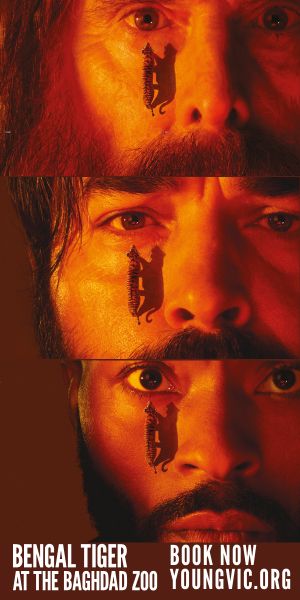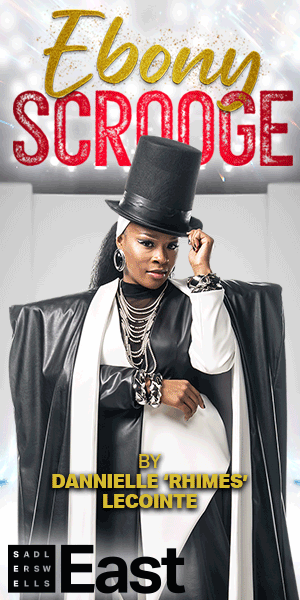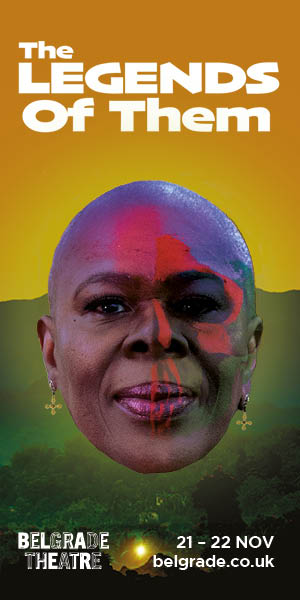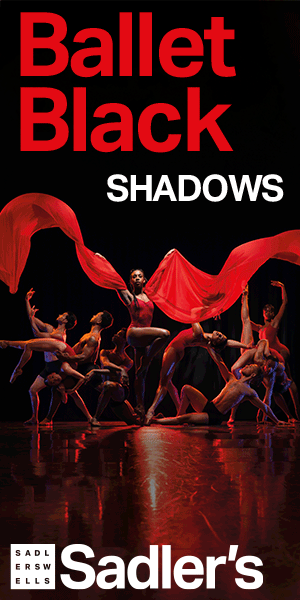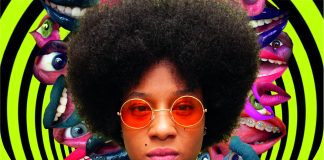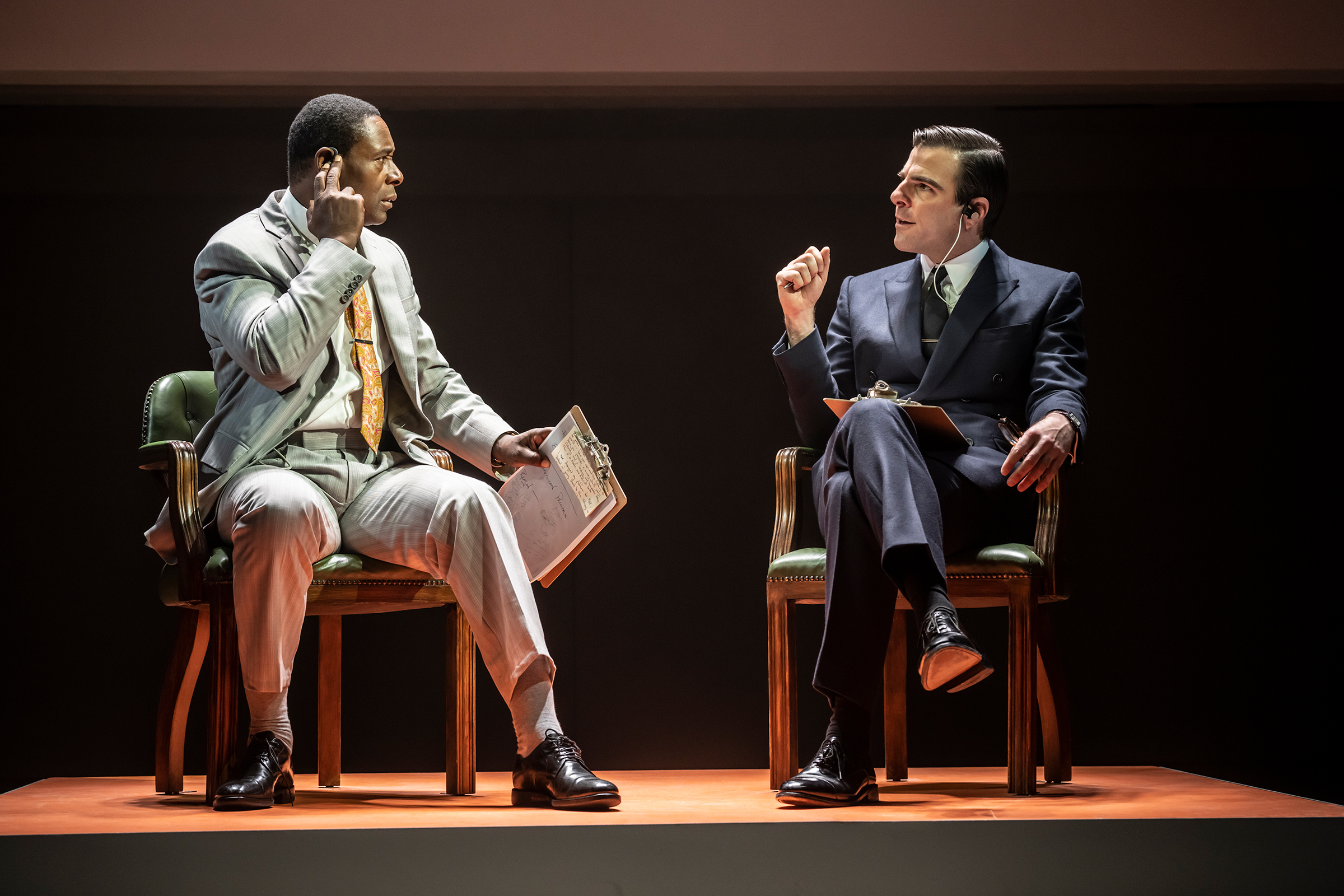
William F. Buckley Jr. and Gore Vidal may not be as well known in the UK as they were in the USA, nor is their role in changing how politics is now covered by television news following their participation in a series of debates in the late 1960s. This fascinating and entertaining play about their relationship and the impact they had on broadcasts still holds relevance today.
Set in the lead up to the 1968 American Presidential elections when television network ABC was trailing their rivals CBS and NBC in the ratings prompting their head of news, Elmer Lower (Kevin McMonagle) to change how they cover the political conventions of the two main parties, the Republicans and the Democrats.
Instead of using journalists or politicians to discuss the facts of the issues of the day, they would have a left and a right-leaning intellectual to exchange opinions in a televised debate at each of the political gatherings. Conservative commentator William F. Buckley Jr (David Harewood) and liberal writer Gore Vidal (Zachary Quinto) are selected for the roles and although both have previously stood for elected office, and lost, neither is considered to be in the mainstream of their respective party.
There isn’t a weak link in the cast and all the supporting actors give strong performances playing a wide range of roles from television executives, the partners of the main protagonists, Vietnam war protestors and various characters from the era including Andy Warhol, Robert Kennedy and slightly more bizarrely, Enoch Powell.
Gore is viewed as being more liberal than most Democrats and Buckley as being on the more extreme right-wing of the Republican Party. The two men have a previous history together and they both don’t really like each other this will only get worse when they appear before the cameras. Buckley’s motivation to take part appears to be a combination of ego and the opportunity to present his views to a wider audience whereas Gore seems to be more motivated by beating Buckley and by getting a chance to be in the limelight.
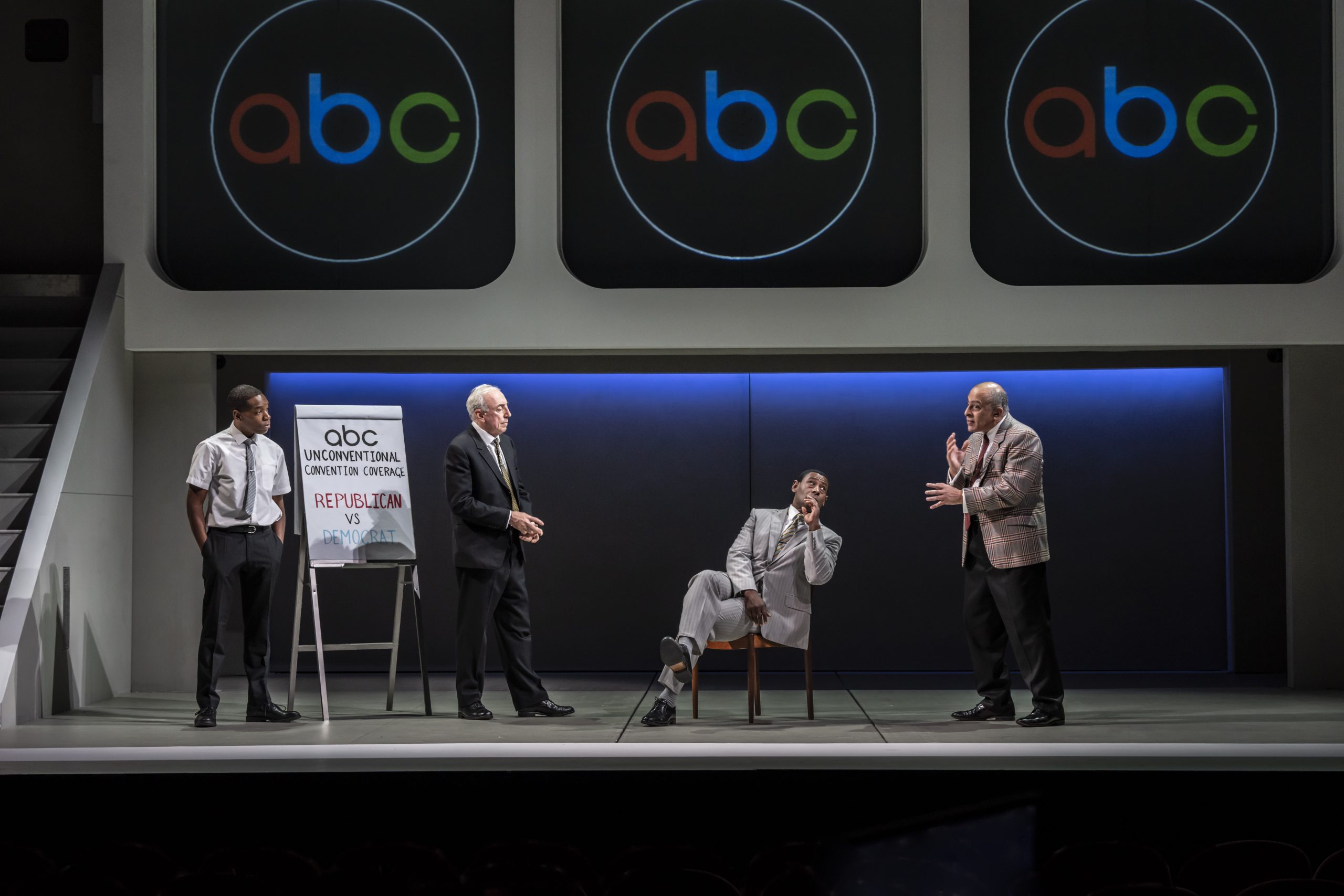
The polarised positions of the 2 protagonists lead to a succession of fiery encounters on television and provide some of the best moments of the play. The debates are television dynamite, starting as principled discussions on the main issues of the day but quickly descending into arguments with Buckley and Gore trading insults and shouting over each other. Needless to say, it’s a rating success.
David Harewood’s performance is electrifying, portraying Buckley as a pompous and arrogant man with quite a fragile ego. He brilliantly captures the nervous ticks and lip-licking quirks for which Buckley was well known. I can imagine Harewood’s casting will be controversial for some who will question why a black actor was chosen to play the white conservative Buckley however it’s a masterful decision.
Buckley with his bigoted views could easily have been the villain of the play but having him played by a black actor invites the audience to look at him differently and see other aspects of the man that they may otherwise have not seen. Part of the brilliance of Harewood’s performance is that he makes you understand some of Buckley’s motivations and even feel some sympathy for him at times.
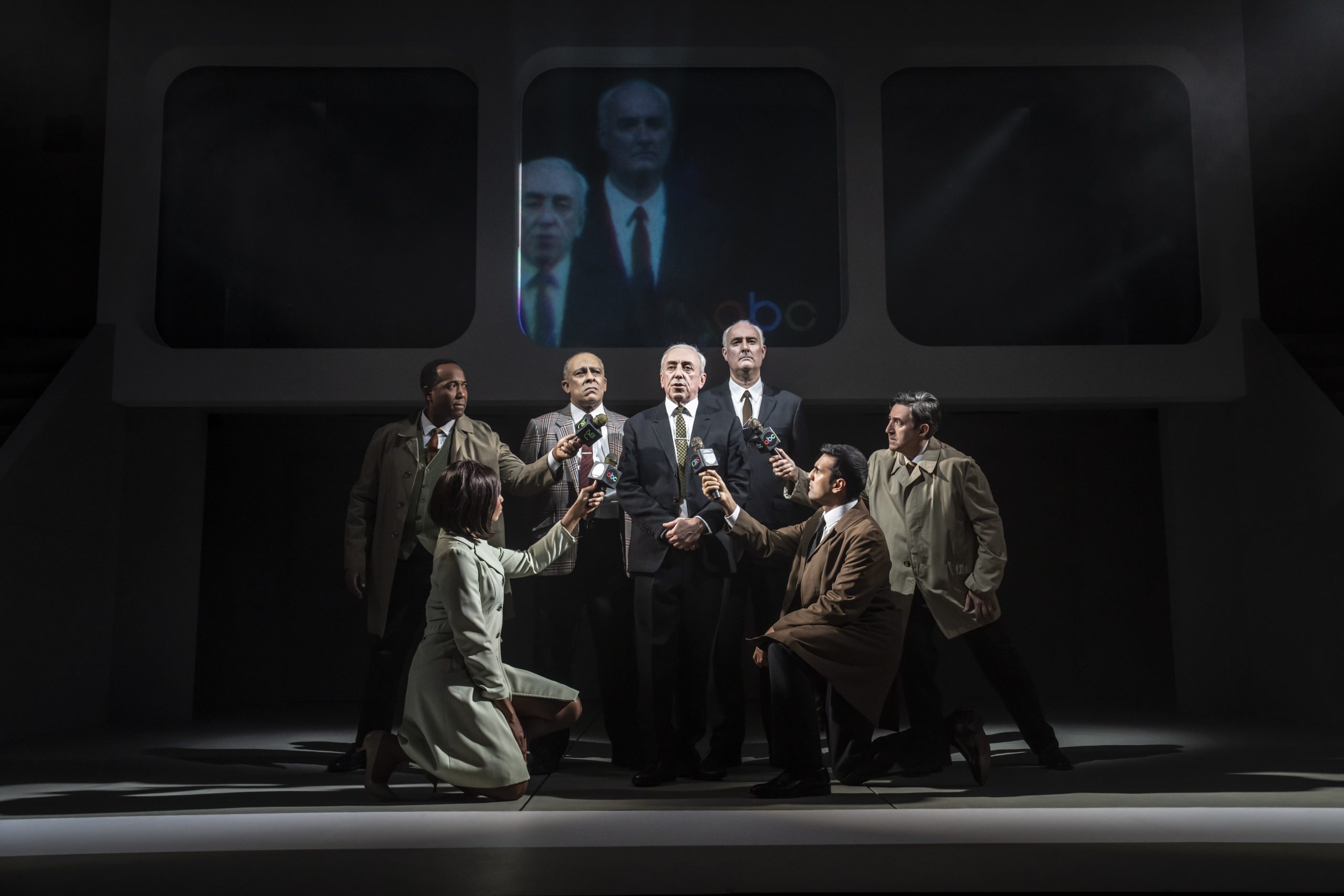
The best and funniest lines went to Zachary Quinto as Gore Vidal but they weren’t written by playwright James Graham, who has crafted a skilful play, but were lifted directly from words spoken in the actual debates. Although the play isn’t a comedy, there is some real laugh-out-loud moments and Quinto’s portrayal of Vidal is a wonderful mix of waspish wit and flamboyant narcissism.
There isn’t a weak link in the cast and all the supporting actors give strong performances playing a wide range of roles from television executives, the partners of the main protagonists, Vietnam war protestors and various characters from the era including Andy Warhol, Robert Kennedy and slightly more bizarrely, Enoch Powell. The standouts were Syrus Lowe who as James Baldwin provided commentary and his own insights to the unfolding events, and Deborah Alli as Aretha Franklin who although she didn’t sing with the power and emotion of the person she was portraying (to be fair, few can match Ms Franklin’s vocal abilities successfully) she had such a good singing voice and stage presence that it was easy for forgive any shortcomings in that area.
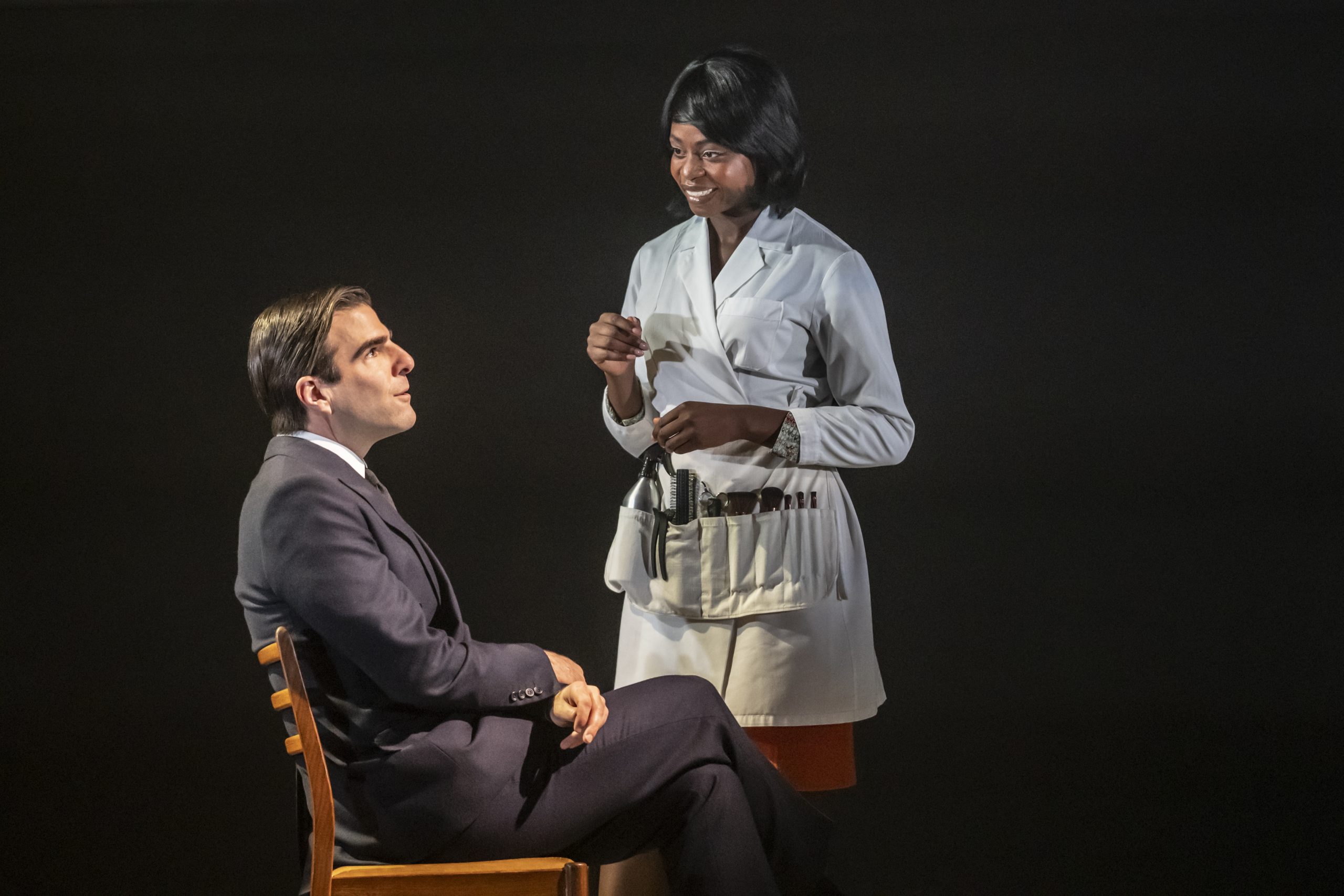
The other star of the show was the set design by Bunny Christie which allowed the action to be played out on two levels. In addition to the main stage, there was an area above it which doubled as a window into a television studio and as television screens showing news footage from the era. On some occasions, scenes acted out on the stage were mirrored in real-life news footage projected on the television screens which was effective in giving more authenticity to scenes being acted out.
Best of Enemies is a play about a moment in history which has resonance and uncanny parallels with television and politics today. Racial tensions, culture wars, pitting rich against poor, old against young and moving away from hard facts and towards a more opinion-based approach to the news were all issues covered in the play that are as relevant today as they were back in the 1960s when the play is set. Although some of the issues in the play are serious, the story is told in such an accessible and gripping manner that will appeal to people regardless of how interested they are in politics and the media.
